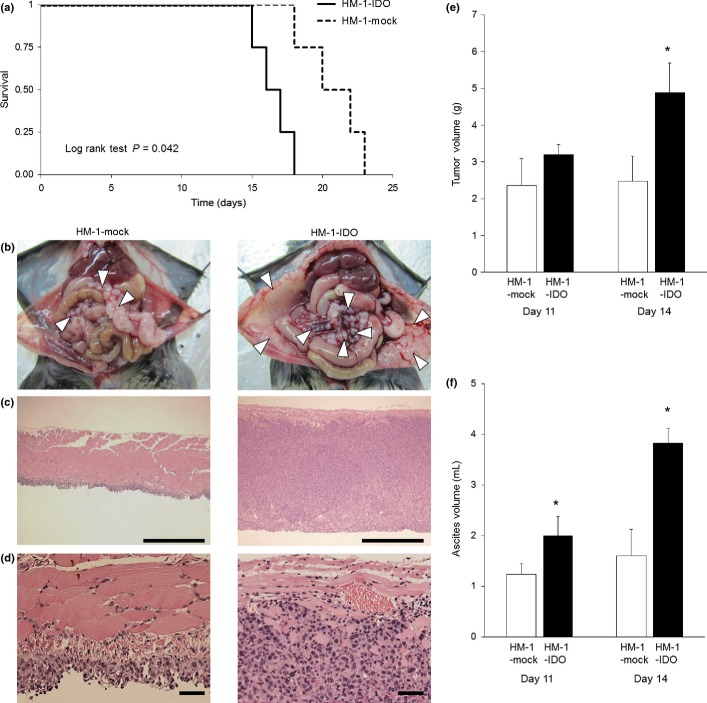Fig. 2.
Pathogenic roles of indoleamine 2,3-dioxygenase (IDO) in the tumor progression of ovarian cancer in vivo. Stable clones of IDO-overexpressing (HM-1-IDO) or control vector-transfected (HM-1-mock) OV2944-HM-1 cells were i.p. transplanted into syngeneic B6C3F1 mice as a model of peritoneal dissemination of ovarian cancer. (a) Survival rate of mice transplanted with HM-1-IDO or HM-1-mock cells. There was a significant difference between the two groups by log–rank test (P = 0.042). (b) Macroscopic views of peritoneal dissemination in mice transplanted with HM-1-mock and HM-1-IDO cells on day 14. Arrows indicate disseminated tumor nodules. Representative results from six independent mice in each group are shown. (c, d) Histopathological findings of disseminated tumors on the peritoneum in mice transplanted with HM-1-mock and HM-1-IDO cells on day 14. Original magnification, ×100 (c) and ×400 (d). Bar = 500 μm (c) and 50 μm (d). (e, f) Total tumor weight and ascites volume were evaluated in mice transplanted with HM-1-mock and HM-1-IDO cells on days 11 and 14. All values represent mean ± SD. *P < 0.05, HM-1-mock versus HM-1-IDO.

